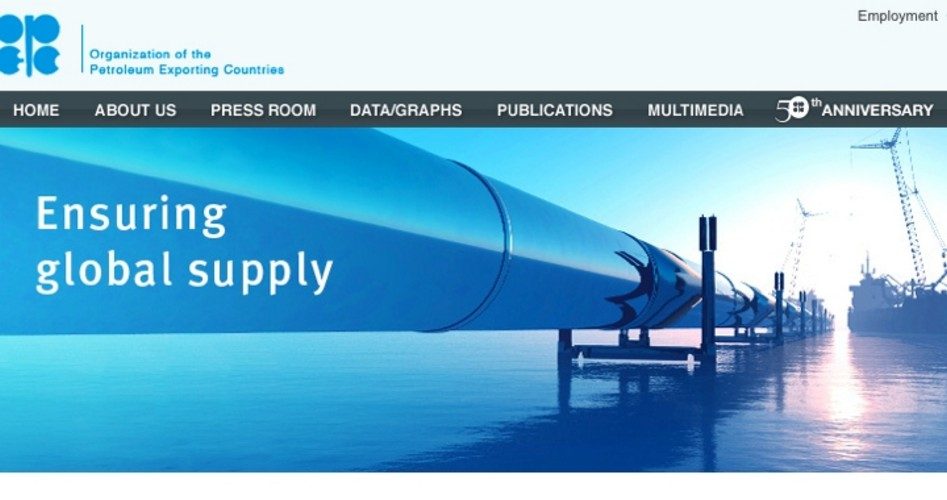
On the surface, OPEC’s gamble appears to be paying off. As the oil cartel continues to pump at near maximum capacity, American energy producers are stacking rigs and laying off workers.
According to the U.S. Energy Information Administration (EIA), there were an estimated 700,000 workers involved in oil and gas development and production prior to the decline in oil prices. Since then, some 200,000 of those jobs no longer exist, rig count is down to record lows, and, if the EIA is correct, U.S. oil output next year will decline for the first time in eight years.
OPEC itself has estimated that U.S. oil production in 2016 will drop by nearly 300,000 barrels a day, to 13.5 million bpd (including natural gas liquids). And this estimate is buttressed by EIA’s forecast that U.S. crude production will drop by a similar amount.
In the meantime OPEC continues to pump at near maximum capacity, at 31.6 million bpd, the highest level since April 2012. This has led Qatar’s Energy Minister Mohammed Al Sada to predict that oil prices, currently at just under $50 a barrel, have bottomed out and will continue to rise.
OPEC’s strategy, according to observers, was to force marginal producers outside of its cartel out of business, shutting off enough supply to force prices higher. Most of the cartel’s economies need oil at much higher levels to avoid going into deficit, and the recent rise in crude prices from $38.50 a barrel in early August to almost $50 currently must have been comforting. It fairly chortled: “This should reduce the excess supply in the market … resulting in more balanced oil market fundamentals.”
What’s not so comforting to the cartel, however, is just how those marginal producers, as well as the majors, are adjusting to those lower prices. Rather than just making indiscriminate worker cuts across the board, several major players are making careful adjustments in order to keep their most valued people working. They hope to avoid the “lost generation” of workers who were laid off in the late 1990s and never came back. As Dan Hill, the head of Texas A&M’s petroleum engineering department, explained:
Everybody who went through this before knows it really hurt oil companies … [for] not having a generation ready to move into management positions [when the industry recovered].
To forestall future worker shortages, Occidental Petroleum and Canadian Natural Resources are employing temporary hiring freezes, putting caps on bonuses, and, in some cases, implementing across-the-board wage cuts in order to adjust to the new reality without gutting their companies.
Continental Resources has vowed not to use the current oil price decline as an excuse to lay off any of its 1,100 employees, but is doing some internal belt-tightening to stay viable and profitable.
It’s helpful to keep the current crude oil price decline in perspective. World crude oil consumption has been steadily increasing over the years to almost 100 million barrels every day. OPEC provides approximately a third of that demand, while the United States provides about one-seventh of it. And so when commentators talk about a “glut” of several hundred thousand barrels of oil being stored in tanks above ground or in tankers at sea, that glut can disappear very quickly.
Cross-currents make OPEC’s celebration of its strategy’s success premature. Each of the BRIC countries (Brazil, Russia, India, and China) is having difficulties keeping its economy healthy, while Iran’s new deal with the Obama administration might unleash a few hundred thousand barrels of oil onto the market by next summer at the earliest.
The EIA has put plenty of fudge language into its latest report, explaining that “the market may be off balance for a while longer [but our] projected marked slowdown in demand growth next year, and the anticipated arrival of additional Iranian barrels — should international sanctions be eased — are likely to keep the market oversupplied through 2016.”
Add to that evidence that the U.S. economy may be heading for a slowdown next year, and the so-called glut might last even longer. But American oil industry ingenuity — along with painful past experience — will likely keep the industry alive and well and ready for whatever comes. If crude oil prices increase, American oil companies will be ready to reset those rigs within months. If prices continue to languish, they will concentrate on their most profitable projects while continuing to develop other projects that can be brought online when the global market dictates. It’s not necessary to mention that the continually developing fracking technology works to reduce oil’s lifting costs, bringing break-even prices ever lower, putting OPEC’s long-term strategy into serious question.
In a word, it is premature for OPEC to celebrate its victory over those marginal producers it hoped to remove from the market so that it could keep crude oil prices high. In the long run, the OPEC cartel might discover that its strategy has backfired instead, keeping oil prices well below what the cartel needs to fund its welfare states for much longer than they originally estimated. OPEC is far from facing an existential crisis, but it is also far from facing a secure future with high oil prices continuing to keep the cartel together.
A graduate of an Ivy League school and a former investment advisor, Bob is a regular contributor to The New American magazine and blogs frequently at www.LightFromTheRight.com, primarily on economics and politics. He can be reached at [email protected].



